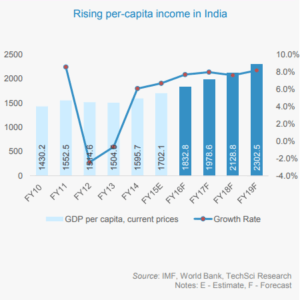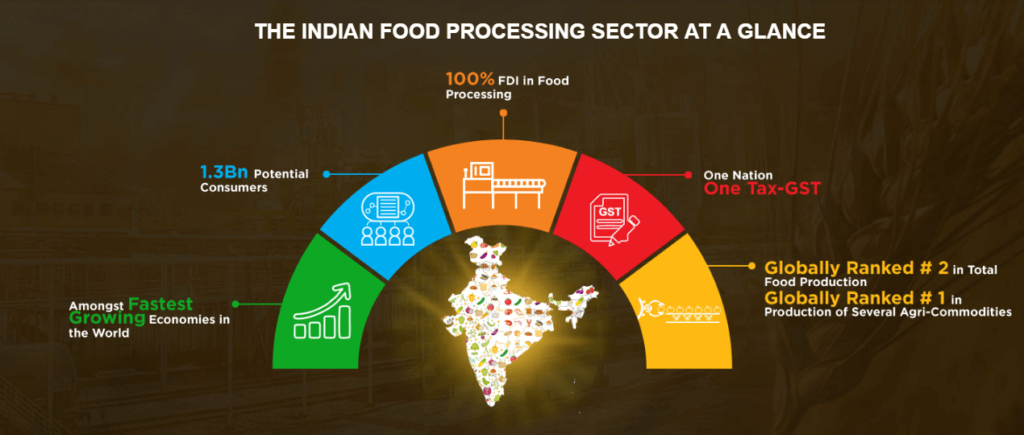Scope of Food Industry in India
With increased agricultural production, establishment of storage facilities, more food processing industries and evolving consumer food preference, the food industry has the potential to become one of the principal industries of India in future. In the recent years, the food industry has emerged as a high growth sector and high profit sector. The processed food market, currently valued at USD 322 billion in 2016, is expected to grow to US$ 543 billion by 2020 at a Compound Annual Growth Rate (CAGR) of 14.6 per cent. For the next 5 years the food industry is expected to grow to US$ 958 billion by 2025, at a CAGR of 12 per cent to account for increasing saturation of the market (As reported by http://rishirajmedia.com/mofpi_new/about).
Increasing Demand:
- Growing disposable income- The market is anticipated to grow on account of increasing working population, growing per capita disposable income, rising per capita expenditure on prepared food, increasing middle class and affluent consumers, etc.
- Youth- India has a large base of young consumers, who form majority of the country’s workforce. These young consumers hardly find time for traditional cooking due to their busy life styles which further creates significant potential for packaged food products.

Food Processing Hub:
India ranks second in the world in total food production. But only 10% of India’s total perishable produce undergoes processing. With the huge raw material base, we can easily become leading food supplier in the world.
Increasing Investments:
There is 100 per cent FDI (foreign direct investment) allowed into the sector through the automatic route. According to Department of Industrial Policy & Promotion (DIPP), Ministry of Commerce & Industry, there has been FDI equity inflow of US$6492.19 million in the food processing sector during 2010-11 to 2016-17. These investments will serve as a catalyst to boost agricultural income and employment.
Government Initiatives:
- Various fiscal incentives are provided by the Government of India for promoting investment in the Food Processing sector.
- Government of India has approved setting up of 42 Mega Food Parks and a total of 228 cold chain projects in the country.
- Institutes like IIFPT and NIFTEM have been established to encourage more students to pursue food technology and to cater the needs of rapidly growing food industries of India.
- The government has introduced a scheme for creation of backward and forward linkages. Under the scheme, financial assistance is provided for setting up of primary processing centers/ collection centers at farm gate and modern retail outlets at the front end along with connectivity through insulated/ refrigerated transport.
- To promote food processing industries and invigorate the Indian economy, the Government has approved the umbrella Central Sector Scheme “PRADHAN MANTRI KISAN SAMPADA YOJANA” and allocation of Rs 6,000 Crore for the period coterminous with the 14th Finance Commission cycle.
India is the least saturated of global markets with a small organized retail and also the least competitive of all global markets. With the combined efforts of government and food industries, India is all set to attain new heights in the future. Going forward, the adoption of food safety and quality assurance mechanisms offers several benefits. It would enable adherence to stringent quality and hygiene norms and thereby protect consumer health, prepare the industry to face global competition, enhance product acceptance by overseas buyers and keep the industry technologically abreast of international best practices.

To Explore More in Food Business!

